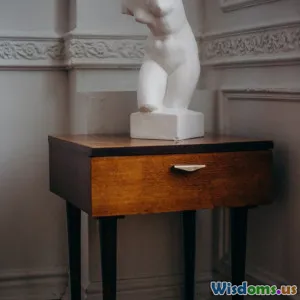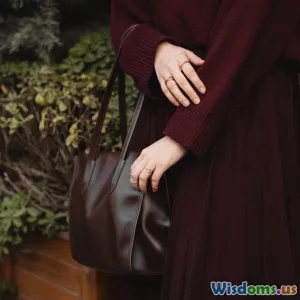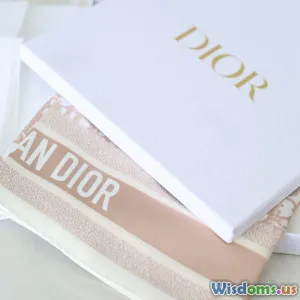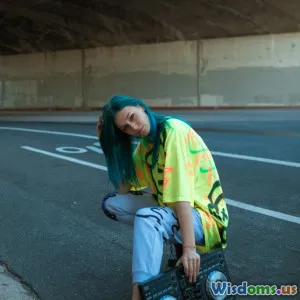
Breaking Down the Quiet Luxury Trend Taking Over Runways
8 min read Explore the quiet luxury trend transforming runways with subtle sophistication and understated elegance. (0 Reviews)
Breaking Down the Quiet Luxury Trend Taking Over Runways
In a fashion world often dazzled by opulence, vibrant colors, and bold logo flakes, a silent revolution is sweeping across runways globally—quiet luxury. This trend whispers sophistication instead of shouting extravagance. It’s less about flamboyance and more about discretion, craftsmanship, and timeless appeal. But what exactly is quiet luxury, and why has it suddenly become the darling of designers and fashion connoisseurs? This article dives deep into the nuances of quiet luxury, tracing its meteoric rise and exploring what it means for the fashion industry and consumers alike.
Understanding Quiet Luxury: The Essence of Understated Elegance
Quiet luxury can be defined as a style that emphasizes subtlety, quality, and timelessness rather than flashy logos or ostentatious displays of wealth. It centers on classic silhouettes, neutral palettes, and superior craftsmanship. Instead of relying on conspicuous brand insignias or loud prints, it rewards a knowledgeable eye that recognizes refined tailoring, fine fabrics, and minimalistic design.
Harper’s Bazaar editor-at-large Sandra Semburg notes, "Quiet luxury is a statement of confidence without the need for loud branding. It shows that true wealth is about taste and longevity, not momentary trendiness."
This minimalist ethos is perhaps a reaction to the fast fashion and logo mania of the previous decades, aligning instead with a consumer-driven desire toward sustainability, timelessness, and reducing overconsumption.
Historical Roots and Cultural Shift
While the label "quiet luxury" is contemporary, its philosophy echoes the fashion sensibilities of earlier icons and eras. Think of Audrey Hepburn in Givenchy: simple black dresses without flashy adornments but an undeniable aura of elegance. Or the refined, policed lines of Italian fashion houses such as Bottega Veneta, which has been a quiet luxury pioneer for decades.
During the early 2000s, conspicuous branding dominated runways and street style equally, with logos emblazoned on everything from handbags to sneakers. However, circa 2020, a cultural shift began accelerating. The reasons include:
-
Social Media Satiety: Consumers crave authenticity and a break from overexposed logo culture.
-
Economic Uncertainty: The COVID-19 pandemic fostered a reevaluation of consumption priorities, valuing pieces that last over fleeting trends.
-
Sustainability: A growing awareness of fashion’s environmental footprint aligns with quieter, better-quality pieces purchased less frequently.
This backdrop nourishes the appropriate ground for quiet luxury to flourish.
Defining Characteristics of Quiet Luxury on Runways
Minimalist Yet Impactful Silhouettes
Designers embracing quiet luxury favor clean lines, understated cuts, and neutral colors such as beige, off-white, greys, and matte blacks. The impact is derived from perfect tailoring rather than complexity.
Impeccable Craftsmanship Detailing
Fine fabrics like cashmere, lambskin, silk twill, and high-thread-count cotton form the backbone of the collection staples. Subtle details—like hand-stitched seams, invisible zippers, and expertly placed darts—become the hallmark of these collections.
Absence of Logos and Flashy Branding
Unlike typical luxury products flaunting large logos, quiet luxury garments almost eliminate visible branding. Instead, craftsmanship and fabric quality serve as implicit brand signatures.
Storytelling Through Heritage
Many brands emphasize heritage and artisan craft to support quiet luxury narratives. Brands like Loro Piana, The Row, and Hermès illuminate this concept. Their collections tell stories of decades of skill transmitted across generations.
Functional Elegance
The designs balance aesthetics with practicality—it’s luxury for living, not just posing. Multipurpose wardrobe staples that transition from work to casual settings embody this.
Brands Leading the Quiet Luxury Movement
Bottega Veneta
Often regarded as the quintessential quiet luxury brand, Bottega Veneta rejects overt logos. Its famous "intrecciato" woven leather conveys exclusivity through craftsmanship alone.
The Row
Founded by Mary-Kate and Ashley Olsen, The Row is synonymous with obsessive tailoring and refined simplicity. Its minimalist palette and immaculate fabrics define quiet luxury today.
Jil Sander
Known as the 'Queen of Less,' Jil Sander’s work revolves around precision, simplicity, and subversion of typical luxury excess.
Loro Piana
An Italian juggernaut that produces extremely high-quality textiles, Loro Piana's products highlight the “quiet” in luxury with their understated, natural elegance.
A 2023 industry report from Fashion Snoops indicated a 30% increase in sales from brands labeled as quiet luxury compared to the previous two years, signaling a clear market shift.
Why Consumers Are Embracing Quiet Luxury
Desire for Timelessness Over Trendiness
In a digital age where trends appear and vanish rapidly, quiet luxury provides a reassuring anchor. These garments aren’t seasonal—they’re investments.
Sustainable Fashion Advocacy
Slow fashion cycles and lasting materials naturally coincide with sustainability goals. Acquiring few but valuable items reduces waste.
Changing Definitions of Status and Wealth
Younger consumers increasingly define luxury by quality, ethics, and knowledge instead of pure display. Quiet luxury symbolizes a subtle internal confidence.
In a recent survey by McKinsey & Company, 64% of Millennials claimed they would pay more for sustainable, high-quality clothing, often associated with quiet luxury brands.
Impact on the Fashion Industry and Future Outlook
Wholesale adoption of quiet luxury requires skill shifts: investment in artisan skills, sourcing of premium materials, and long-term brand building. The runway collections from Paris to Milan in the last year clearly mirror this shift.
High fashion is moving toward exclusivity defined by scarcity and craftsmanship rather than volume and logo slapping.
Looking forward, as Gen Z and Millennials mature as key consumer bases with heightened social awareness, quiet luxury is positioned not as a fleeting trend but as a foundational philosophy in luxury fashion.
Conclusion
Quiet luxury might seem paradoxical—luxury that hides in plain sight—but this is precisely what makes it compelling. It elevates fashion from mere adornment to a statement of values: restraint, sustainability, and genuine excellence. The quiet luxury trend taking over runways today invites us to rethink what it means to be truly luxurious, reminding us that often, less is infinitely more.
Embracing this trend can encourage consumers and designers alike to focus on quality, ethical practices, and long-term style investments. As the fashion industry evolves beneath our feet, quiet luxury quietly—yet powerfully—redefines the future of elegance.
Rate the Post
User Reviews
Other posts in Sustainable Fashion
Popular Posts














